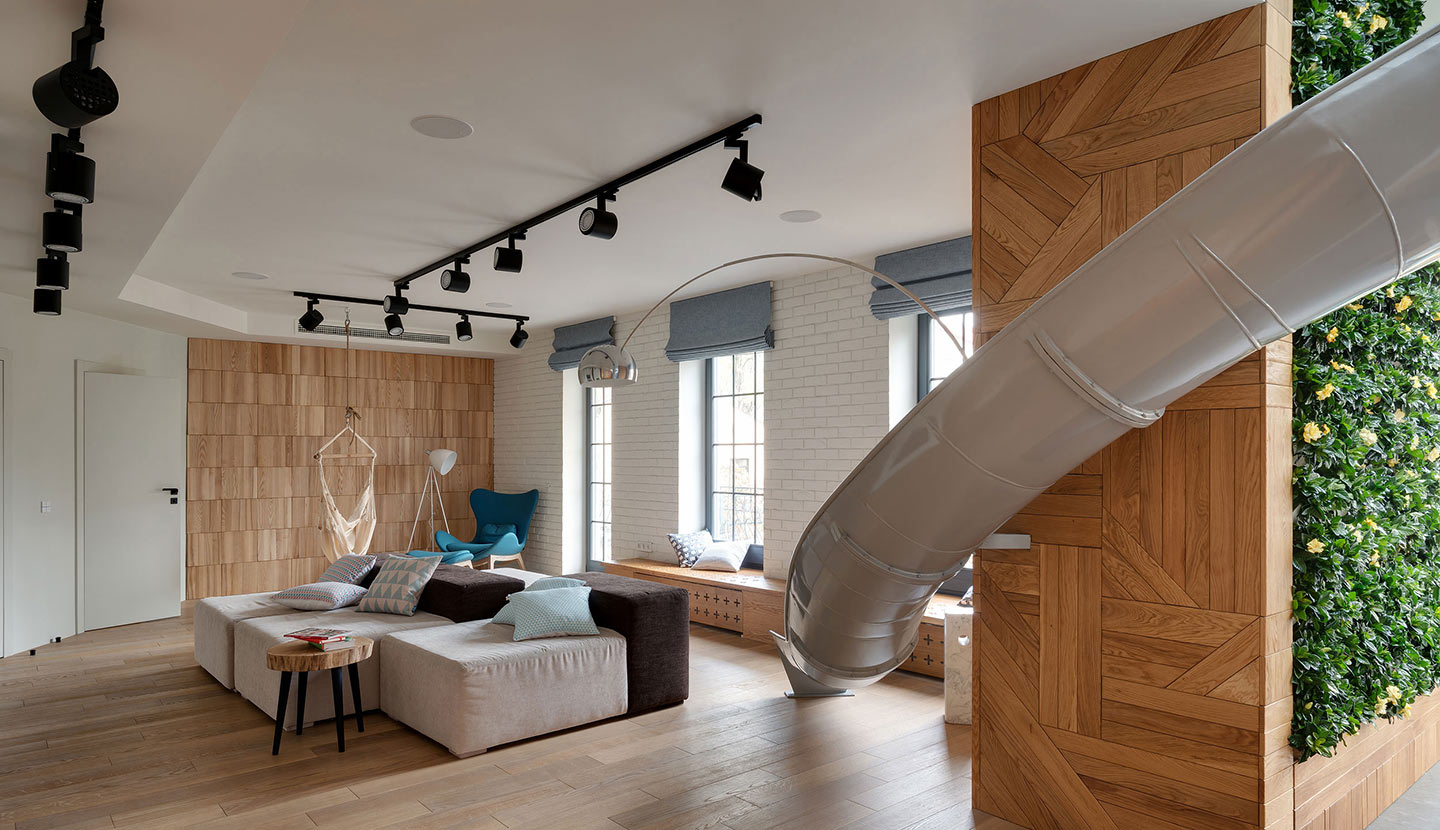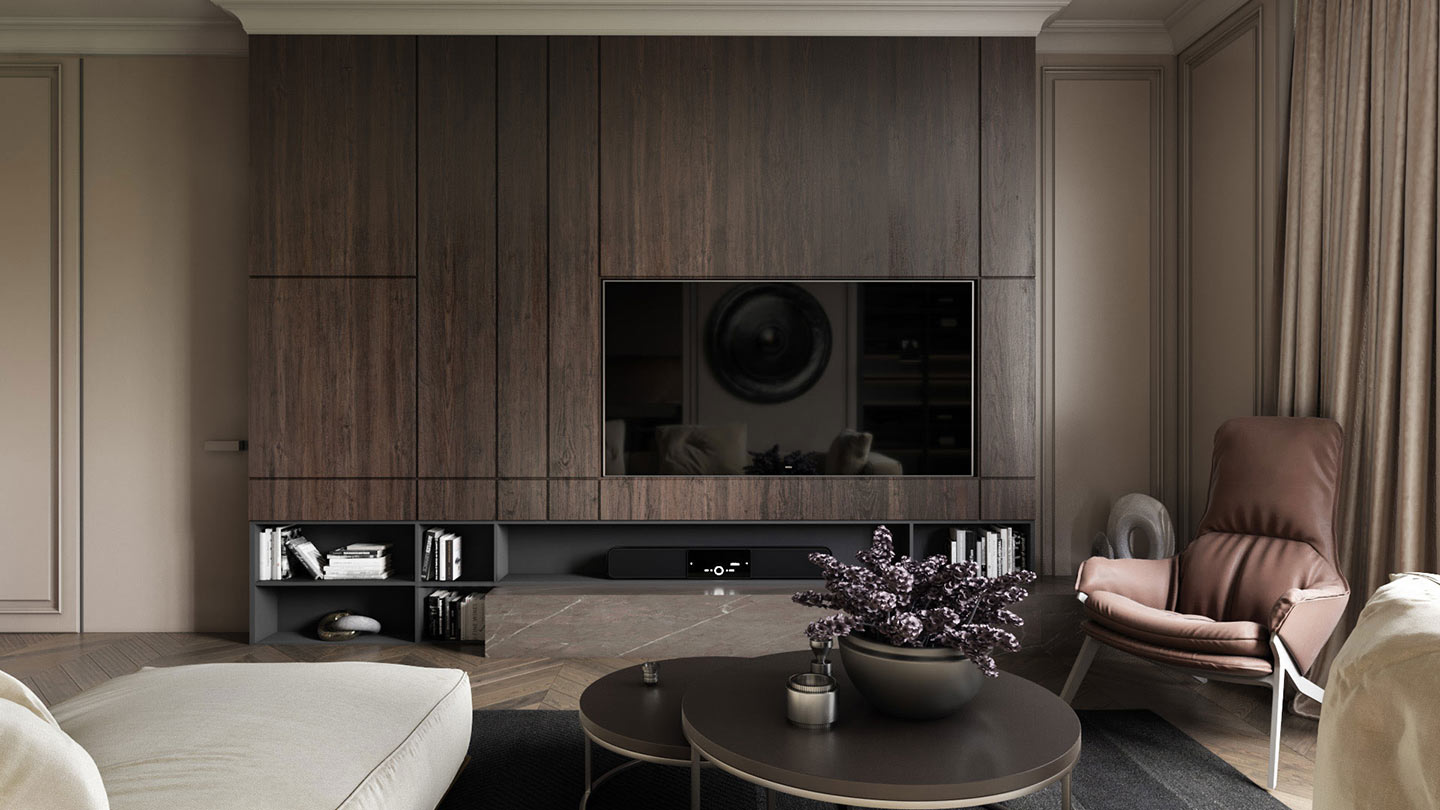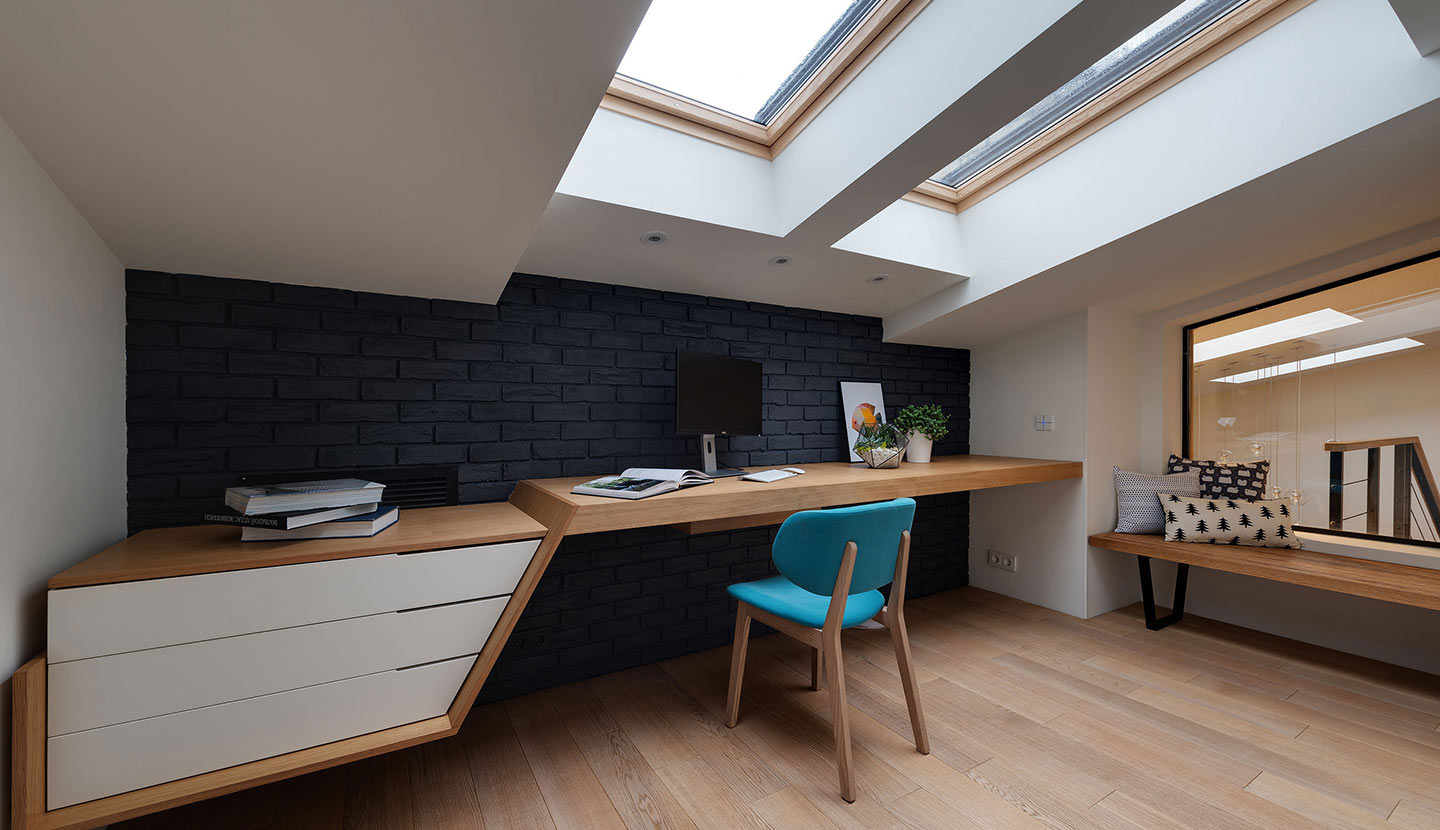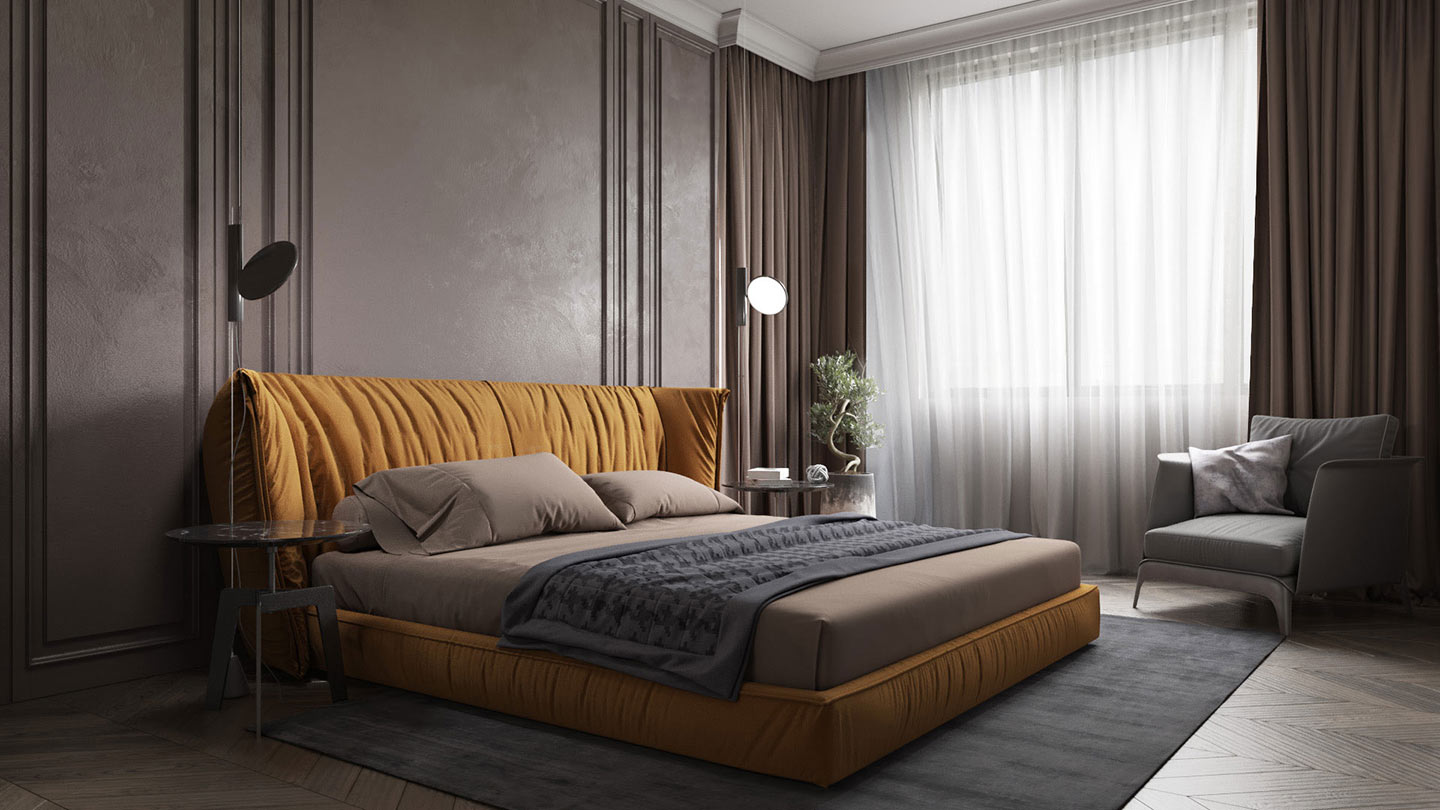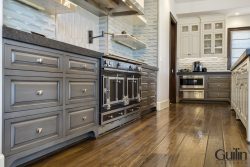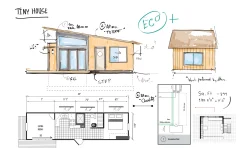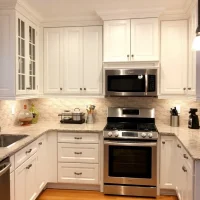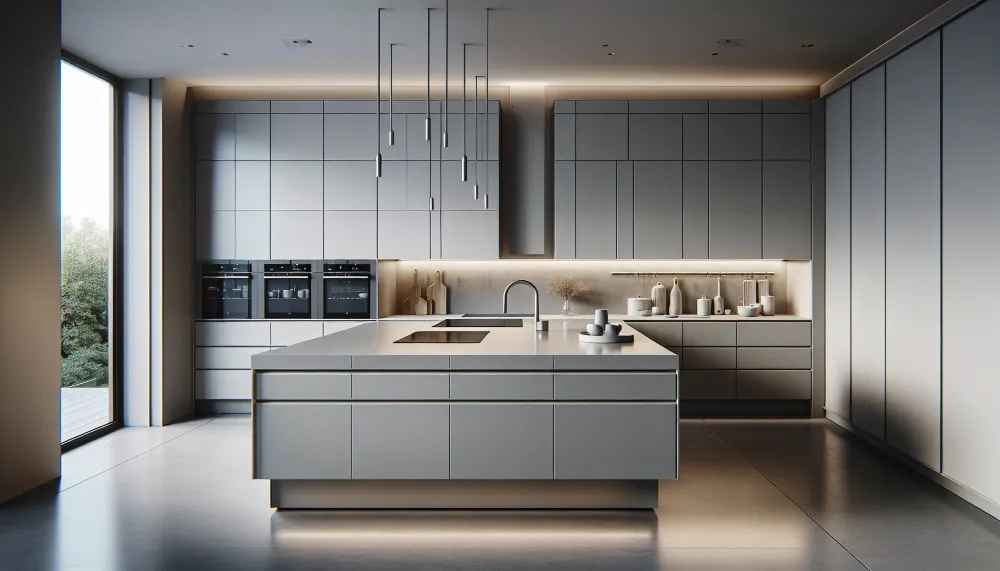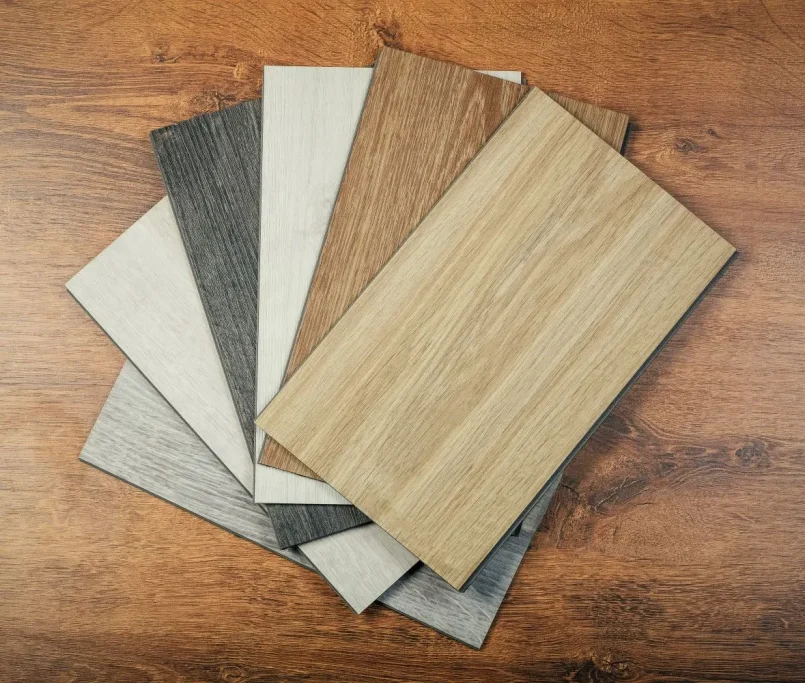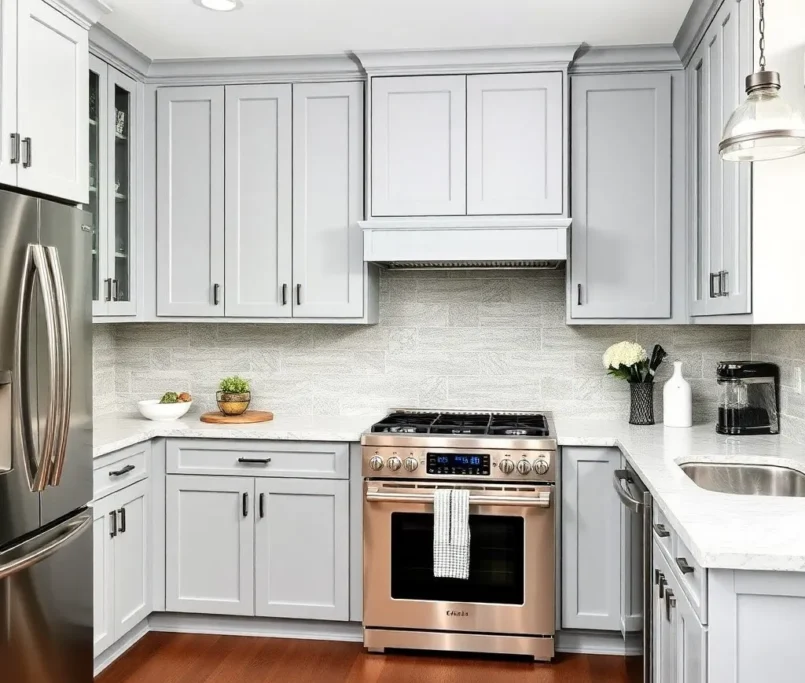There’s no denying that a kitchen island is a versatile and practical addition to any kitchen space. If you find yourself needing more countertop space or looking to enhance the functionality of your island, extending it might be the perfect solution. Here are creative ideas to help you transform your kitchen island and make the most out of your space.
=> Related Article: Types of Kitchen Islands: Extended, Extra-Extended, Bubble, Perpendicular Extension, Peninsula Extension Islands
Adding a Breakfast Bar or Seating Area
Despite the size of your kitchen island, adding a breakfast bar or seating area can significantly enhance its functionality and aesthetics. With a few simple adjustments, you can extend your island to create a cozy spot for enjoying meals, entertaining guests, or even doing homework.
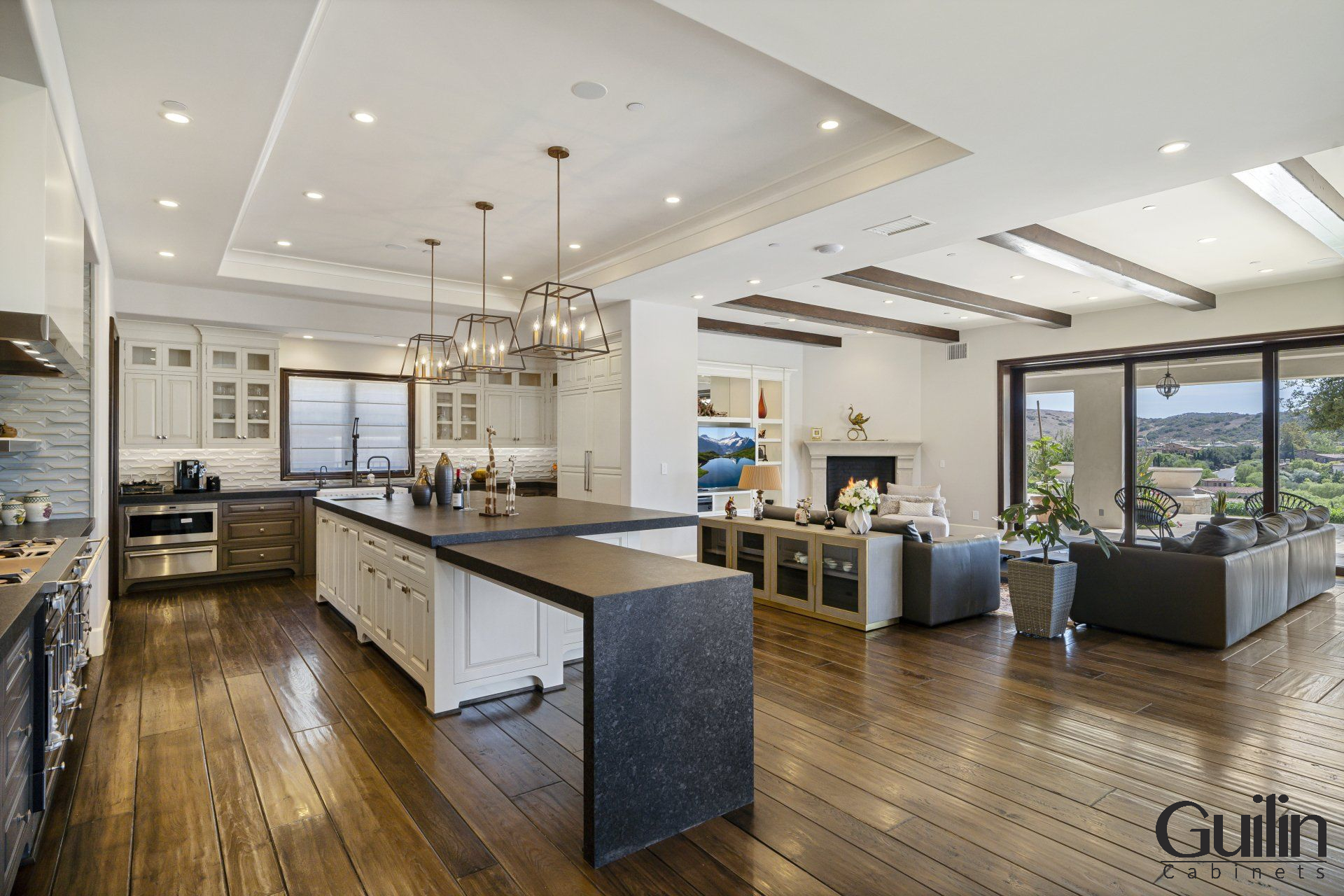
By incorporating overhangs or extensions on one or more sides of the island, you can easily create space for bar stools or chairs. This allows family members or guests to sit and interact with the chef while meals are being prepared, turning your kitchen into a social hub.
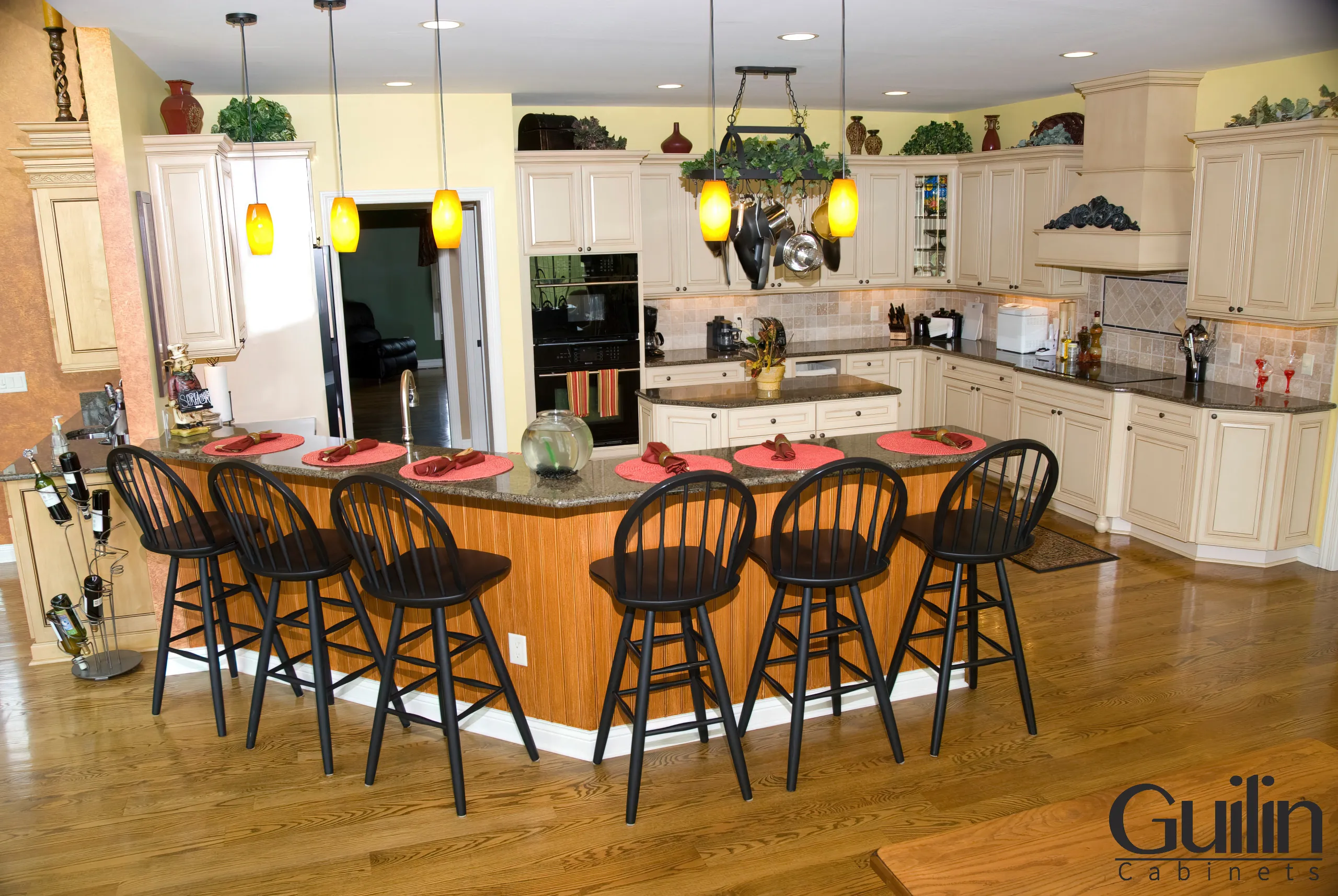
Additionally, installing a countertop at a different height than the rest of the island can create a designated eating area. This separation can help define the space and make it feel more like a dining table, providing a comfortable and inviting spot for meals.
Incorporating a Wine Rack or Beverage Station
To enhance the entertainment value of your kitchen island, consider incorporating a wine rack or beverage station. By extending the island to include storage for wines, liquors, or beverages, you can keep your favorite drinks easily accessible while freeing up cabinet space elsewhere in the kitchen.
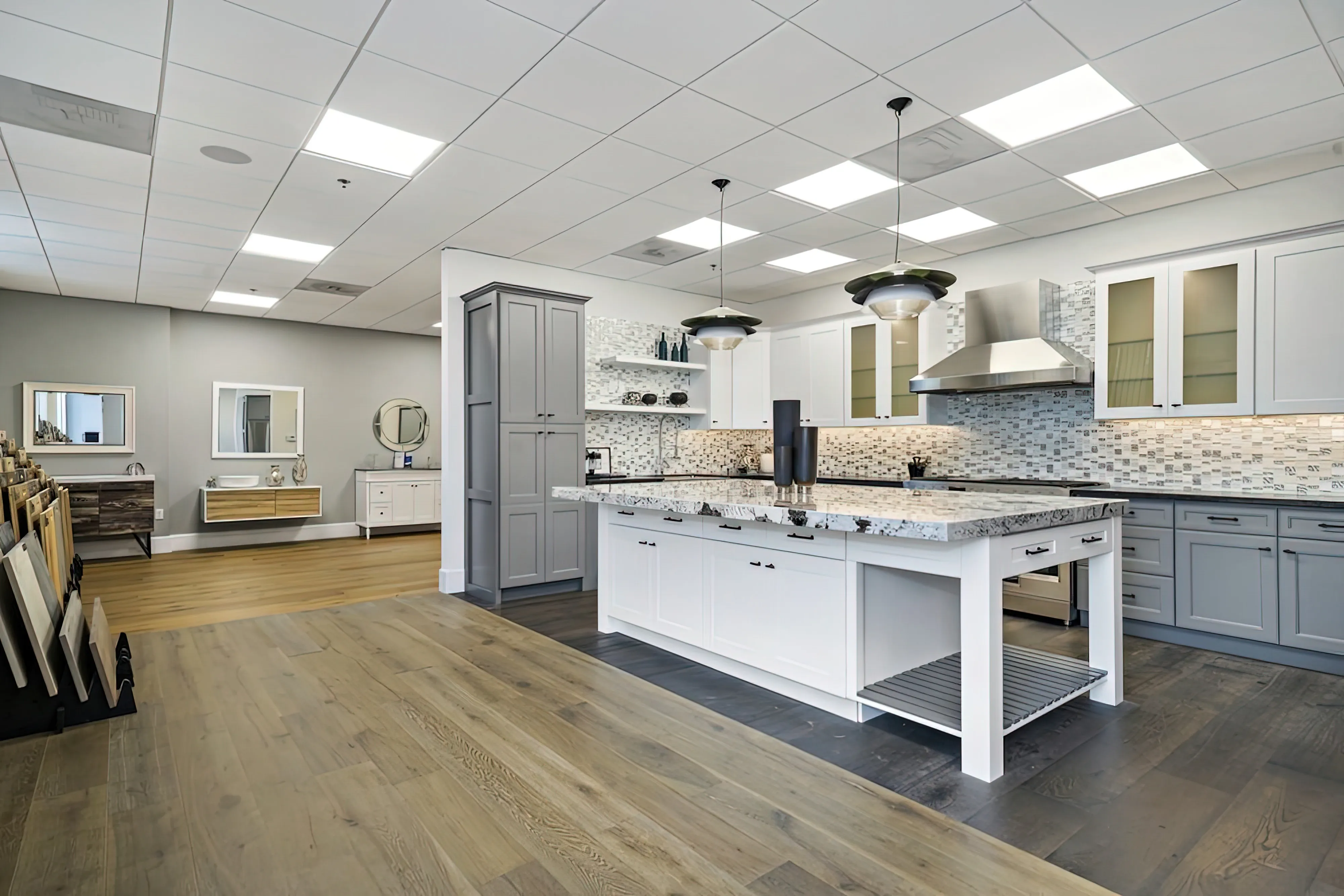
A built-in wine rack can be designed to fit seamlessly into the island’s structure, adding a touch of elegance and sophistication to your kitchen. Alternatively, a beverage station with a small refrigerator and storage for glasses and mixers can make hosting gatherings a breeze, allowing you to serve drinks without leaving the cooking area. Whether you’re a wine connoisseur or enjoy hosting cocktail parties, incorporating a wine rack or beverage station into your extended kitchen island can elevate your home’s entertaining capabilities.
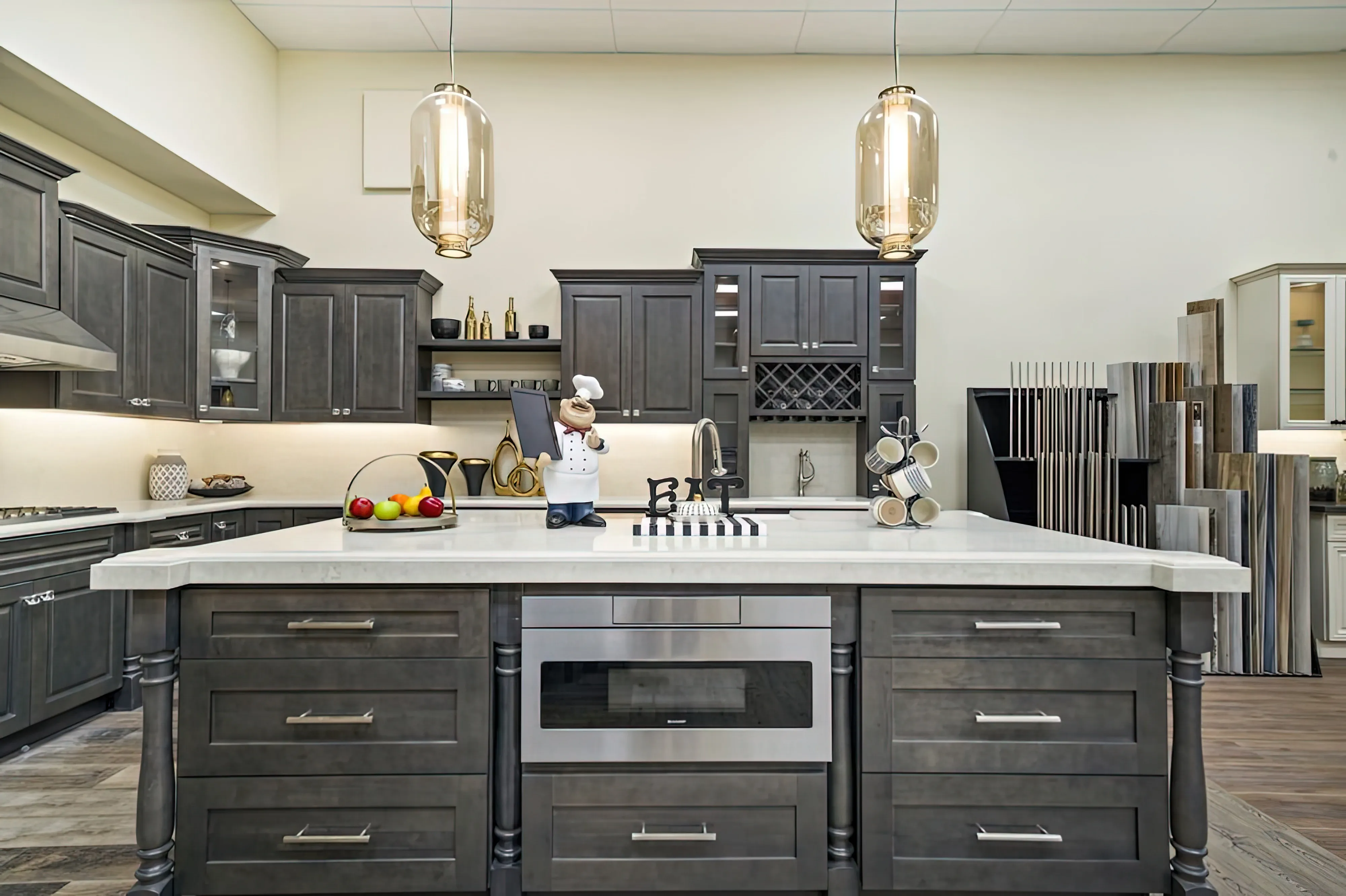
Think about the storage options needed for glasses, mixers, and even a mini refrigerator to keep your beverages chilled. This type of setup makes it effortless for you to prepare cocktails while engaged with your guests. With kitchen islands often being the focal point of culinary creations and conversations, incorporating a beverage station elevates your home’s entertaining capabilities and maximizes your space effectively. Whether you’re a seasoned wine connoisseur or casually hosting friends, creating a tailored drink area will undoubtedly boost both functionality and aesthetic appeal.
Pull Over a Kitchen Cart
While extending your kitchen island, adding a kitchen cart can be a convenient and flexible option. When choosing the right kitchen cart for your island, consider the size and shape of your existing island. The kitchen cart should complement the style and color scheme of your kitchen to create a cohesive look. Additionally, think about the functionality of the cart – whether you need extra storage, serving space, or a movable solution. Factors to Consider When Adding a Kitchen Cart to Your Island:
- Size and shape of the kitchen cart
- Color and style compatibility with the existing island
- Functionality and storage options
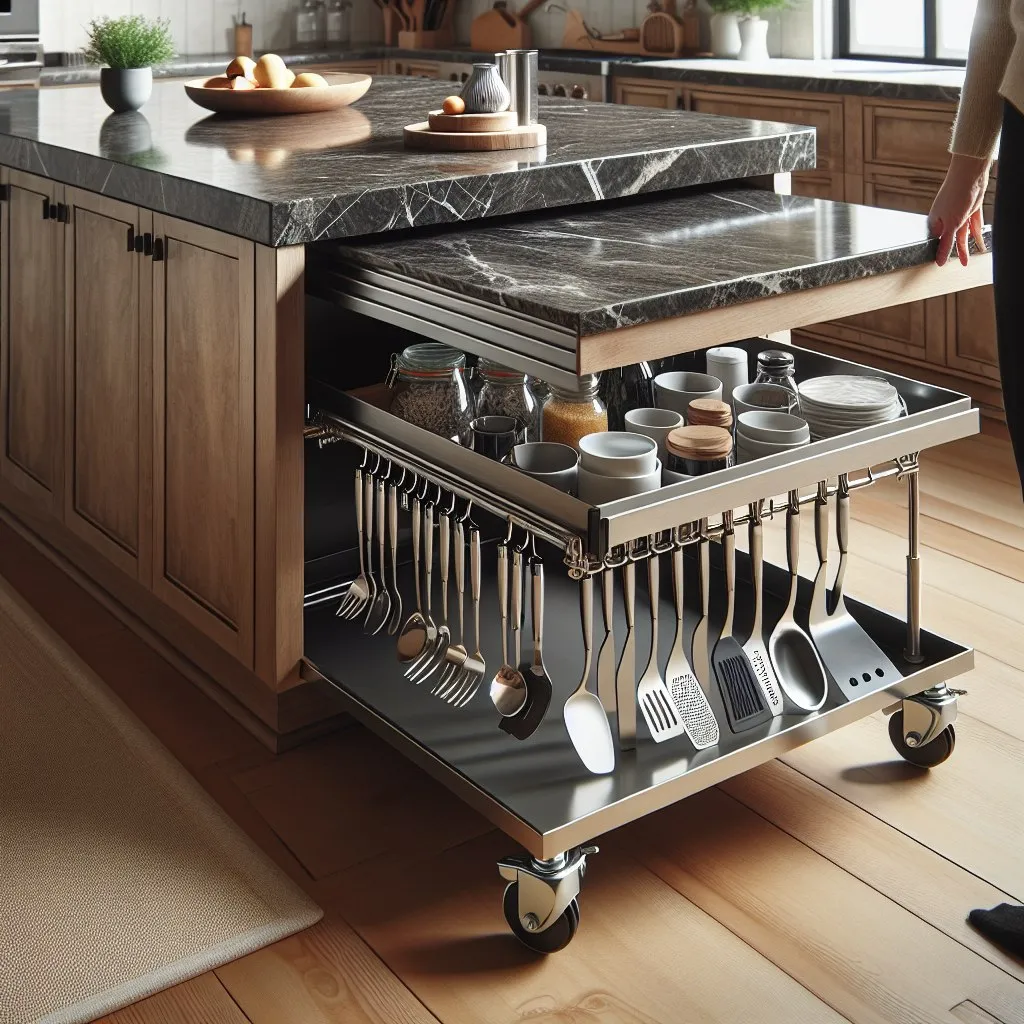
Assuming you have measured the space available for the kitchen cart, look for one that fits perfectly without obstructing the flow of your kitchen. Consider the material of the cart, ensuring it is durable and easy to clean. Wheels are another important factor to consider – make sure they are sturdy and can lock in place for stability when in use. On top of these factors, think about the height of the kitchen cart in relation to your island. You want to ensure that the top of the cart aligns well with the countertop of your island for a seamless look. The kitchen cart should also allow for easy movement around your kitchen, so make sure there is enough clearance space. Additionally, consider the weight capacity of the cart to ensure it can hold the items you need it to without compromising stability.
Designing Custom Cabinets for Maximum Storage
After deciding to extend your kitchen island with additional cabinets, the next step is to design custom cabinets that maximize storage potential. There’s a wide range of options to choose from, including deep drawers for pots and pans, pull-out shelves for easy access to items at the back of the cabinet, and built-in organizers for spices and utensils. By customizing your cabinets to meet your specific storage needs, you can make the most of the new space and ensure that everything has its place.
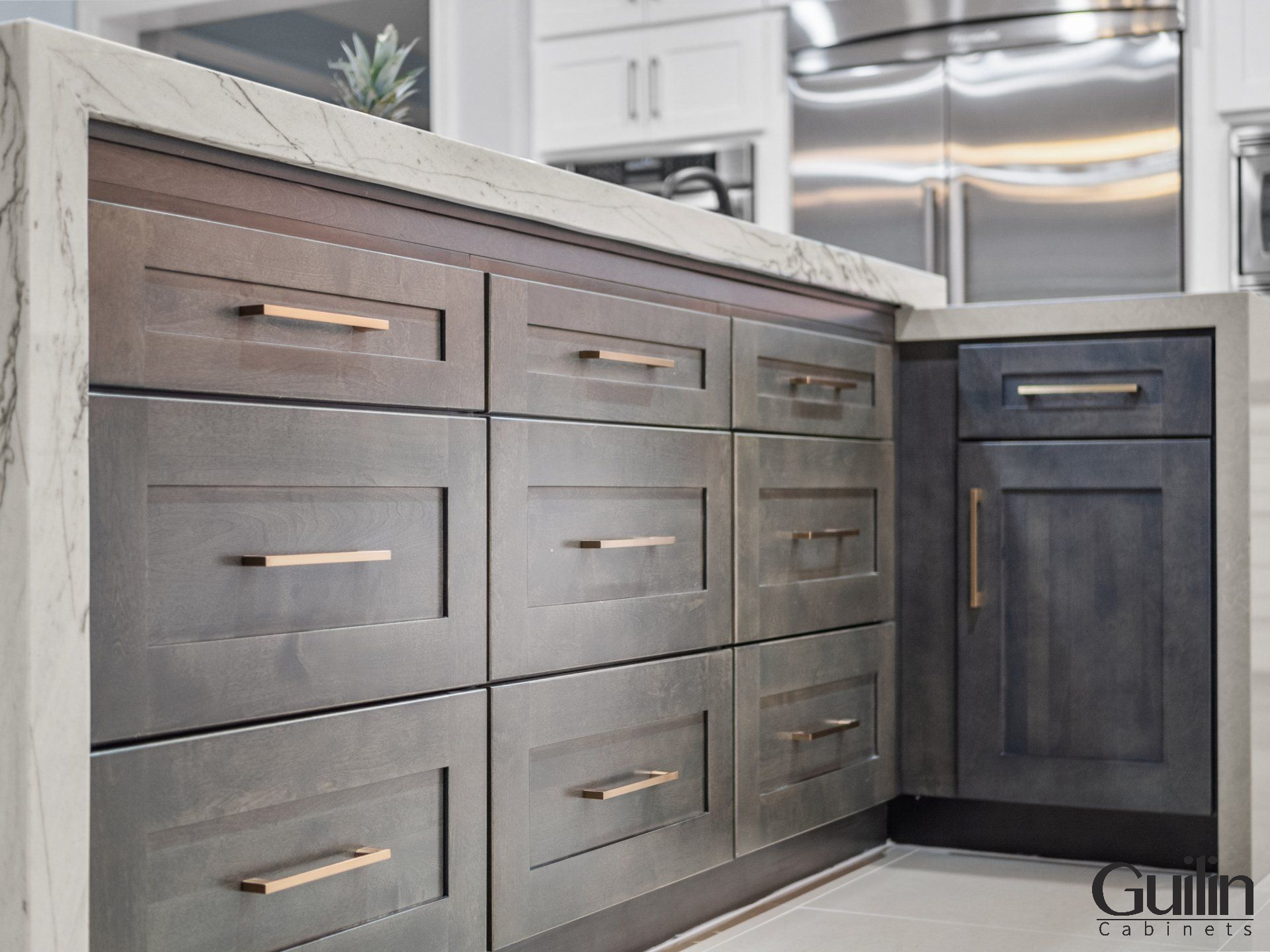
Consider incorporating features like adjustable shelves, dividers, and tray storage to keep your cabinets organized and efficient. Don’t forget to think about how the cabinets will blend in with the existing island design in terms of materials, finishes, and hardware. With careful planning and attention to detail, you can create a seamless look that enhances both the functionality and aesthetics of your kitchen island.
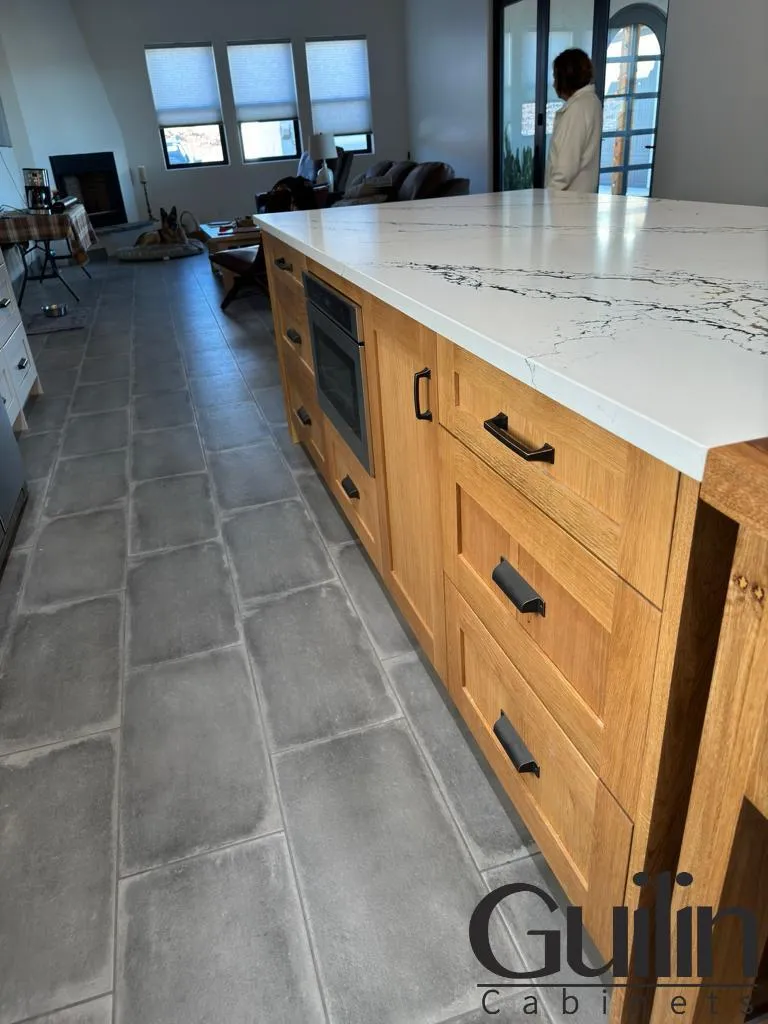
Work with a professional cabinet maker or kitchen designer to bring your vision to life and ensure that the new cabinets are both practical and visually appealing. Their expertise can help you navigate the design process and make informed decisions about the layout, materials, and hardware for your extended kitchen island.
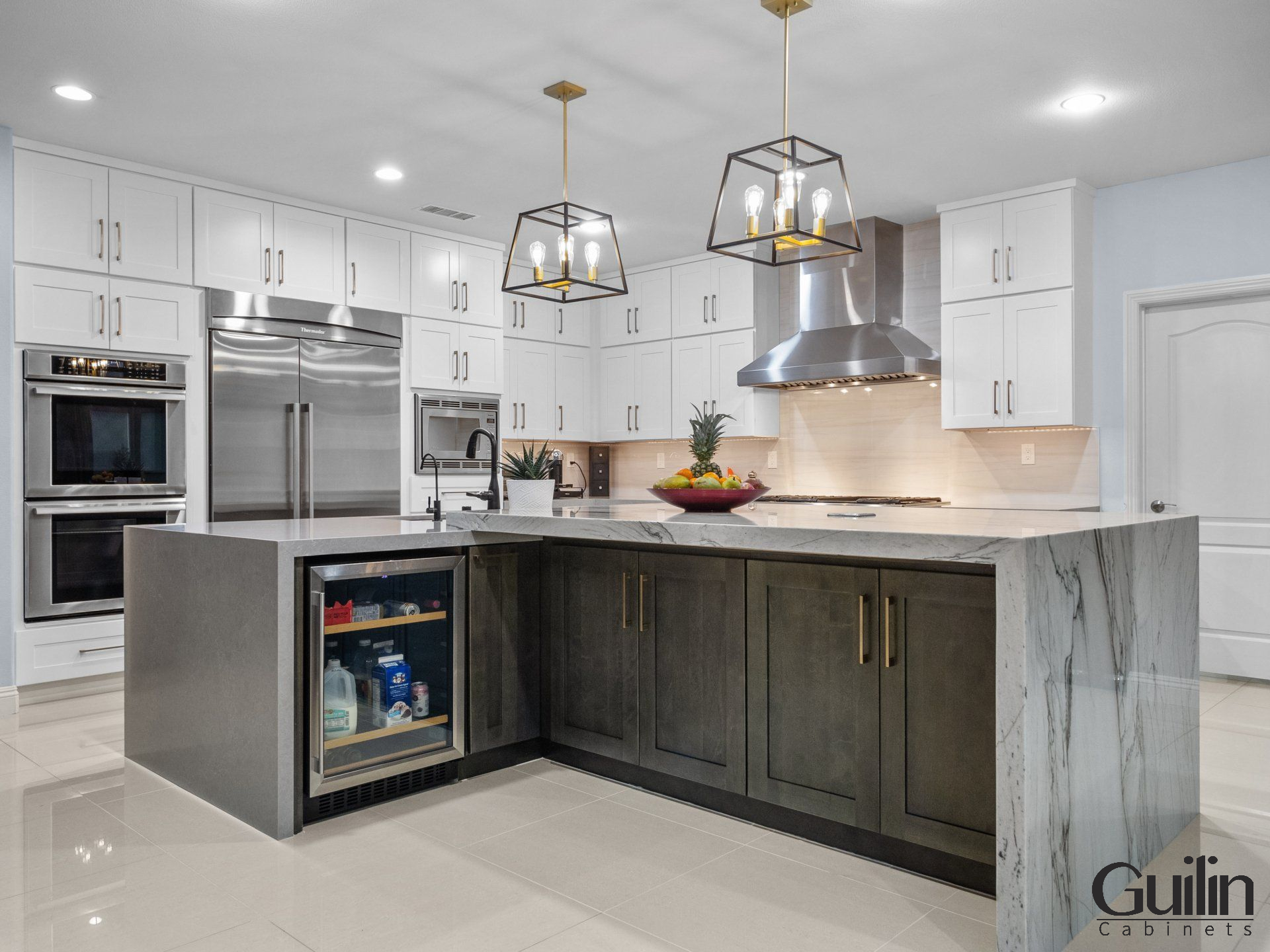
Expand Your Space with a Cantilever Counter
A cantilever beam is perfect for overhangs because it is only attached at one end. A cantilever counter adds an extra foot or two to your current island counter. With this setup, you can convert the space under the bar to a breakfast nook or additional prep area, while the space above may be used to store bar stools neatly out of sight.
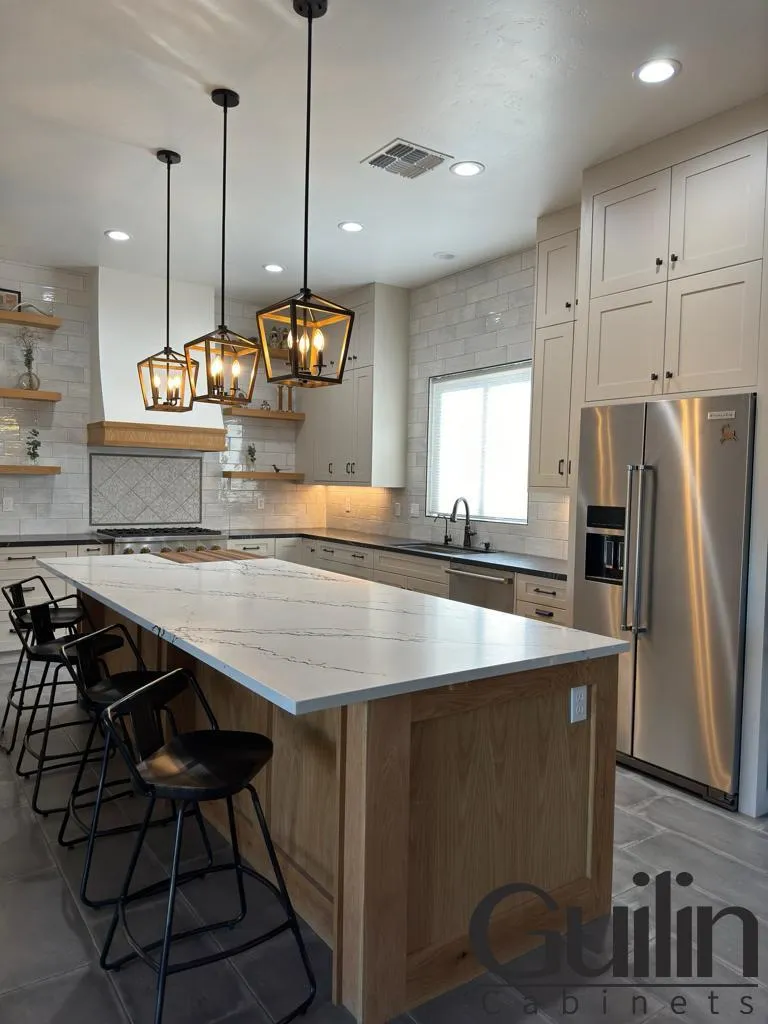
If you don’t have any leftover materials, it can be challenging to match the countertop materials used for the original countertop, which is the trick with a cantilever counter extension. But if you already have counters and cabinets in the same color scheme, installing a hardwood counter top can be a more cost-effective alternative.
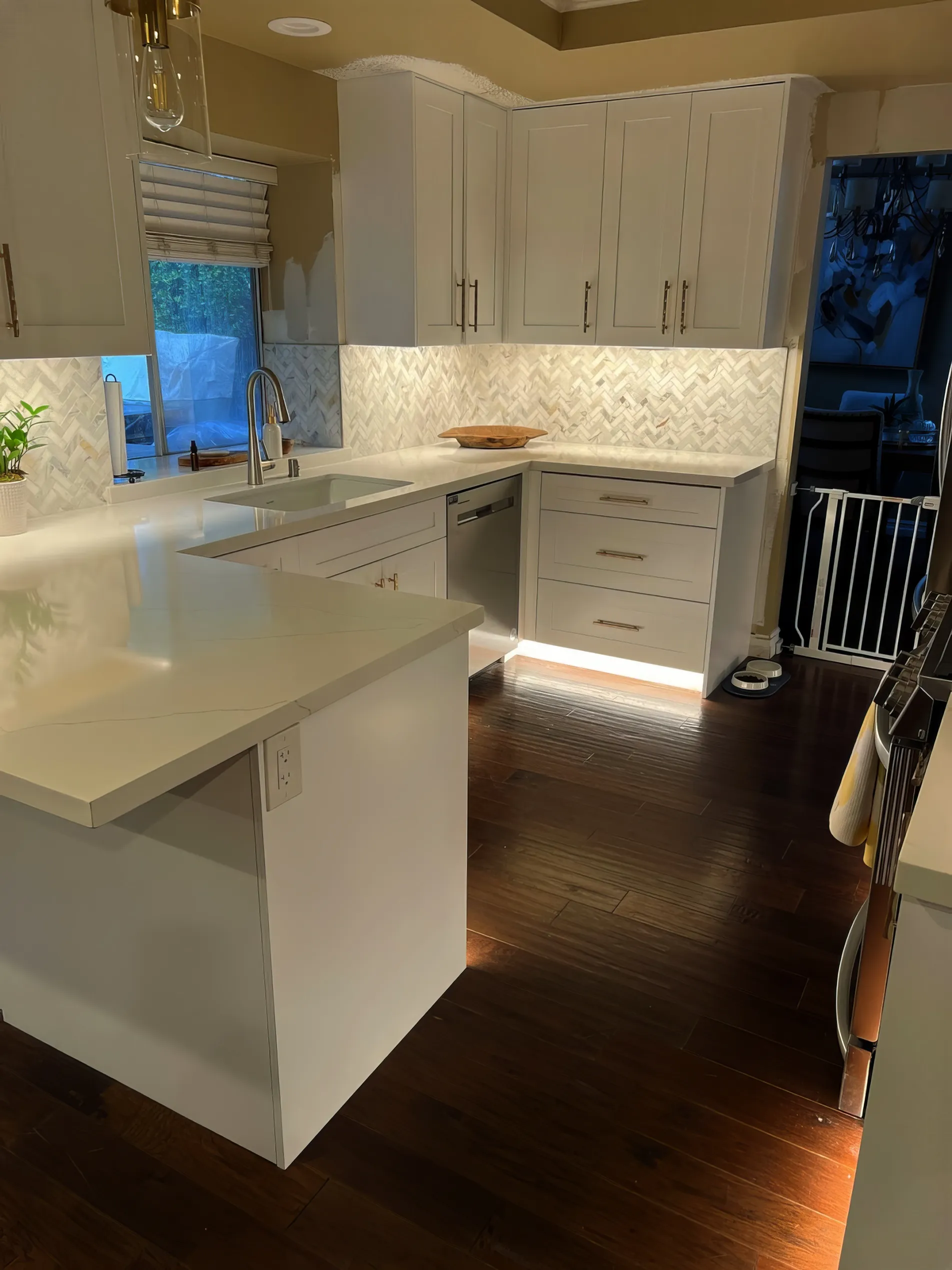
Transforming a cantilever counter into a waterfall edge, with the counter descending on both sides to create an attractive vertical surface, is a more upscale update. This choice restricts your access to the sides, but the eye-catching layout leaves enough of space beneath the counters and for storage.

Incorporate An Additional Kitchen Island
Adding an additional kitchen island is a no-brainer if your floor plan allows it. If your current island is too cramped and your open floor design doesn’t have enough for a peninsula, bar, or counter space, this is a great addition. It is possible to design a neighboring island that is similar to the first but serves somewhat different functions. The kitchen’s functionality is substantially enhanced by the two islands, which work in tandem. You should know that constructing a kitchen island can cost anywhere from $3,000 to $6,000, making it one of the priciest choices.
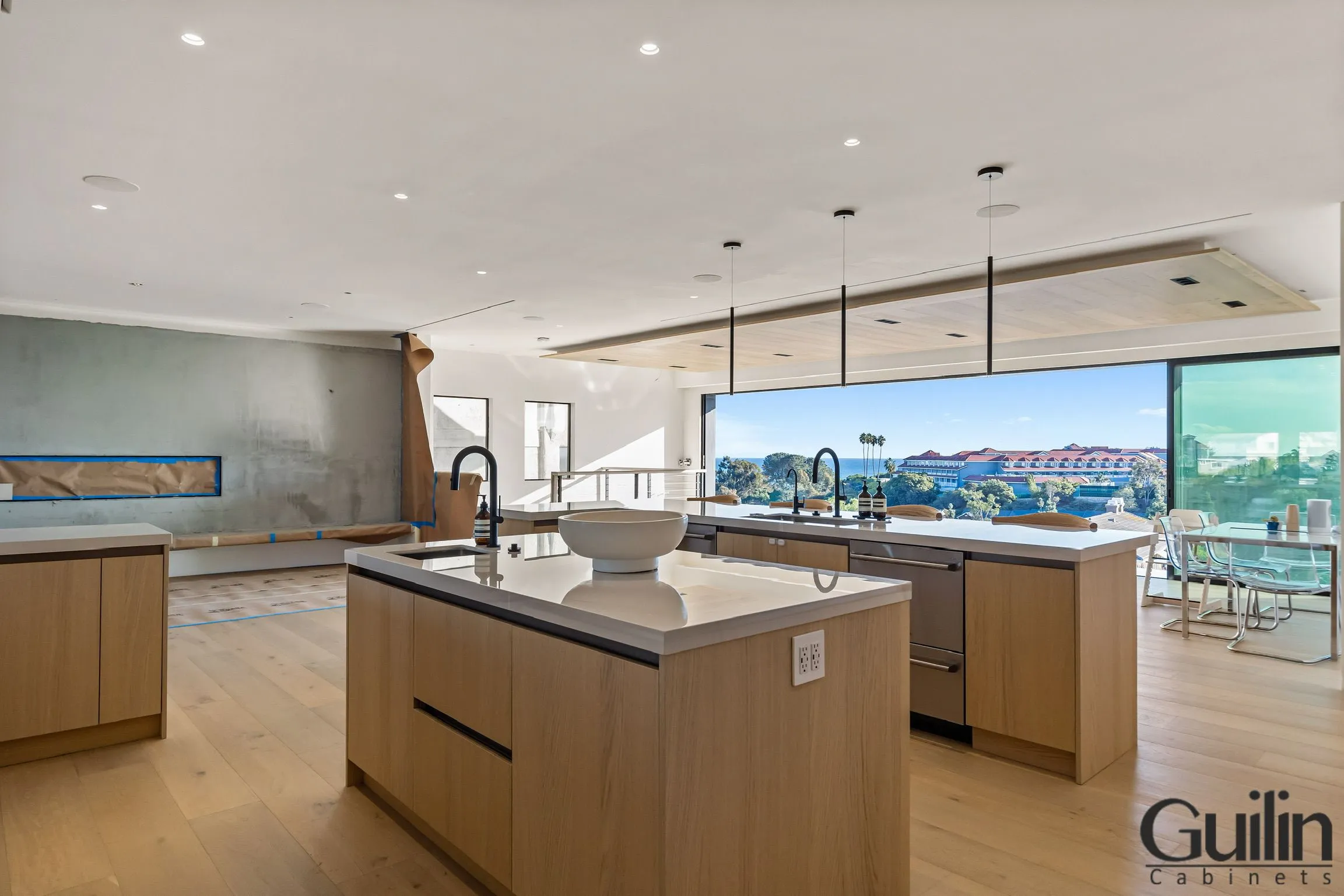
Adding a second island not only provides extra countertop space but also enables you to organize your kitchen more efficiently. You can designate one island for food prep while using the other as an area for entertaining guests or casual dining. This approach can transform your kitchen into a vibrant hub for socializing and cooking, enhancing both your home’s versatility and your lifestyle. By incorporating an additional kitchen island, you are investing in your home’s overall functionality, making it a smart and stylish choice for your kitchen renovation.


